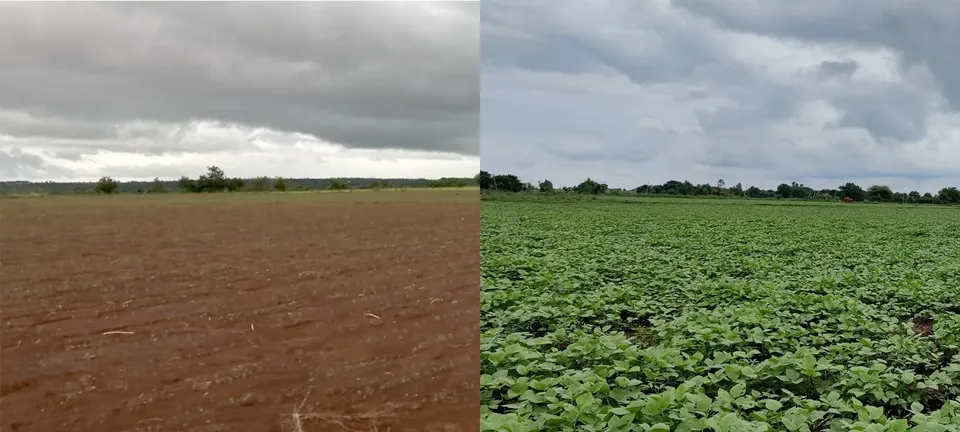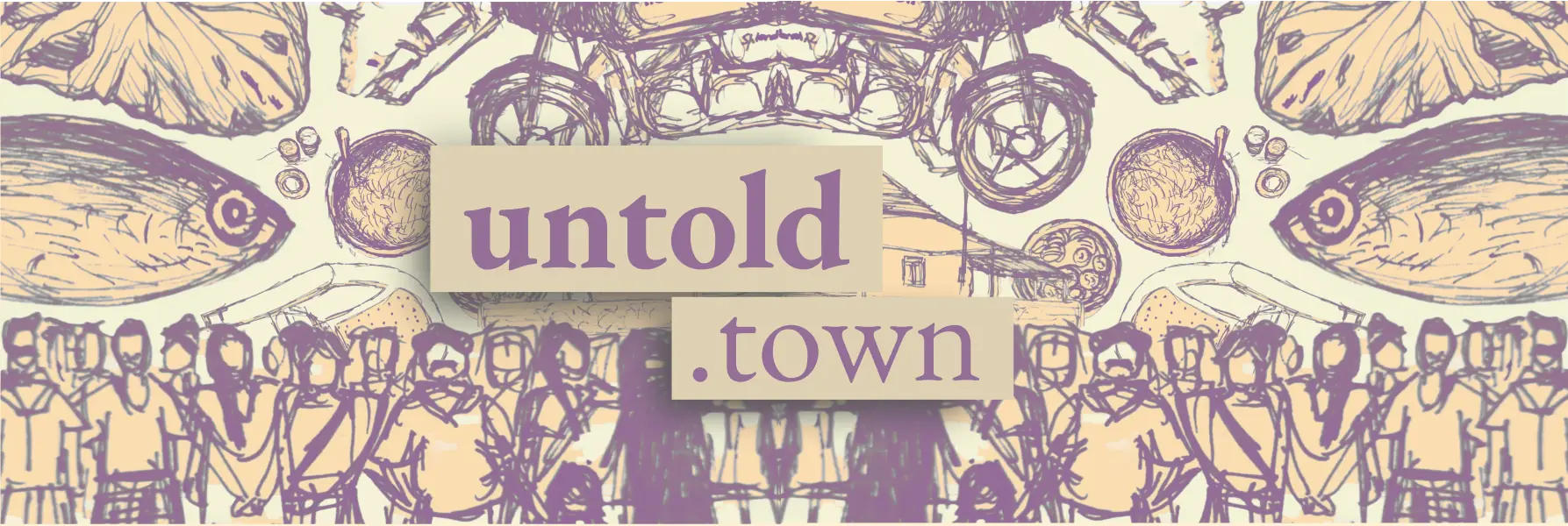In-Conversation: On observing weather variations and climate shifts

Co-authors: Swati Surampally, Paromita Bhatija, Micah Alex
Bidar’s farmers have many different ways of talking about their farming practices and the changing climatic conditions these practices depend on for understanding, responding, and adapting. For example, climate change is often referred to as ‘prakriti niyama’, which loosely translates to the ways, or laws, of nature. Everyday articulations and conversations are instrumental in understanding how farmers across the region perceive and respond to cyclical and climatic changes. While scientific or academic discourses and understandings of ‘Climate Change’ abound, these everyday observations that arise in conversation allow for a deeper engagement with local experiences of climate change. These ways of knowing, born from a need to respond to land and its shifts, are an integral component of local (knowledge) practices of climate resilience and adaptation. Engaging with these practices also allows us to explore people’s motivations and behavior. Such accounts are crucial in developing climate-action plans in collaboration with local communities that facilitate adaptation. Below are a few excerpts from our field conversations with farming communities, which reflect observations, understandings, and conversations about the shifting climate and the changes that have come with it:
Shankar, from Yakhatpur, has been working as a well-digger for the last 24 years. People from the villages around call him when they need a new well dug. He talks about how water availability, which his livelihood depends on, has changed over the years:
“You have to keep digging until you reach water. Usually, you find it at 15-20 feet, but sometimes you have to dig until 30-35 feet. Water is found at 15 feet in Yakhatpur. Earlier, when there was more rainfall, the water was found at 10-12 feet.”
Maruti, who is from Aliyabad, has a 17-acre farm, but the soil is ‘kala pathhar’, which doesn’t yield much. He spends some of his time working as a farm laborer for a large farmer in his village. He tells us about changes in rainfall and pests:
“When I was young, we used to grow more Shenga (peanuts), but that needs a lot more rain, and the rainfall has been decreasing for the last ten years, so it doesn't grow as much these days. Pests such as Phankahula, Kaddihula, Putputi, and Nusi are now common, and insecticides such as Endosulphan, Colegar, and Shangi are used to control them. It was only 15-20 years ago that fertilizer became so popular – before that, there were no pests! The pests increased only when the use of fertilizers increased. With fertilizers, crop production is 3 times more. That’s why people use it. But today’s jowar (sorghum) gives you only one-third the benefits of the old kind.”
Gangoshetty Patil, from Murzapur, talks about the increased used of fertilisers:
“The Green Revolution started this race for yield. After the 60s, people started using DAP, Urea, and Potash. In red gram crops, Hasirukaikoraka is the commonly found pest. Togri (pigeon pea) seeds used to be treated with cow urine earlier for pest control. Now they are treated with Tricoderma before sowing.”
Jharnappa is a 60-year-old farmer from Yakhatpur. His village has a mix of both red soil and black soil. Jharnappa owns two small farms, one with red soil and the other with black soil, and he grows different types of crops on each. He describes how people used to grow “hasi jola (yellow sorghum), humsa rice (fat rice), navni (foxtail millet), shenga (peanuts). But now people are growing safed jowar (white sorghum). People in the village have aam (mango), anar (pomegranate), and santra (orange) orchards. Earlier, people used to grow only 1-2 trees for their own consumption; however, in the last ten years, they have been planting trees on a large scale and reaping a good harvest. Vegetables such as bhindi (okra), tomato, and baingan (brinjal) are also grown.”

He also talks about the recent emergence of pests: "Previously, when we used cow dung manure, there were no pests." Pests appeared only after people began using fertilizers. Fertilizers have been in use for approximately 40 years now. He reflects on why farmers now pay more attention to outside 'experts': “pehle kheti takath ka kaam tha, abhi dimaag ka kaam hai” (earlier, farming was the work of strength, now it’s the work of the mind).
Khandeppa is a 104-year-old farmer, the oldest person in the village of Sirsi. He suffers from a loss of hearing, but he patiently spoke to us about changes in farming and climate over time:

“We didn’t grow lentils in the past because the rainfall was heavier than it is now; they would get washed away, so jowar (sorghum) was the primary crop. Because the amount of rainfall has been decreasing over the last 20 years, we are now able to grow lentils and other crops. Other crops grown in this region are Shaavi (little millet), Baragu (porso millet), Taudi, and two other varieties of rice: Basmati and Ratansagar, which do not grow in Sirsi because they require much more water. During the drought of the 1970s, we bought jowar (sorghum) from Zahirabad – hasiru jola (yellow sorghum), which tasted bitter.”
Gurlingappa Meldodhy from Hudgi has been practicing organic farming for the past 20 years and is also a Karnataka Rajyotsava Prashasthi Puraskar awardee. He has a rain gauge installed on his farm and mentions that most farmers now use the AccuWeather app for weather forecasts. He observed the impacts of present-day practices in agriculture:
“Our mother earth is sick, and we need to recover her. We have destroyed all the organisms in the soil.” He also referred to changing weather patterns: “The average annual rainfall we get per year in Bidar is 800mm; this year, it might be around 1000mm. 8-10 years ago, storms occurred once or twice a year; now it's like once a month or so. When storms occur in Andhra-Tamil Nadu, this region gets affected too.”
Chandrakanth, a farmer from Kamthana, says:
“Previously, until the 1970s, there used to be abundant rain, and there was no pest problem. Post-1970s, as the rainfall started decreasing, the number of pests increased. Since the rainfall has decreased, people have started to grow soya. My field is in a low-lying area, and this year's heavy rainfall damaged all of my crops due to water stagnation.”
Mallikarjun Karimungi from Hudgi has recently moved back to his village, and he is able to observe changes in the climate based on his memories:
“Rainfall used to usually end around Dussehra. Now, since the last few years, it continues until Diwali, so it has extended by 20-30 days. It also used to rain in this area during the Holi festival. Holi hunni boodhi toyslak mali barle beku (Rain has to come to smother the ash of the bonfire lit for the Holi festival). There used to be rainfall either on Holi or the following day, but that’s not been happening since the past few years. Nowadays, if the rainfall is heavy in the beginning of the month of June, there is hardly any rainfall in the following period, but then it gets heavy towards the end of the monsoon again – this appears to be a trend since the last 8-10 years.”
The reflections and observations shared by farmers from various villages in Bidar offer valuable insights into the shifting patterns of climate and agricultural practices in the region. As climate variability continues to challenge traditional farming systems, these farmers highlight the adaptability, resilience, and deep knowledge embedded within their practices. From changes in rainfall patterns to the emergence of new pests, it is evident that local communities are not only witnesses to these changes but are actively engaging with them through both traditional wisdom and modern technologies. The stories shared here underscore the importance of documenting and understanding local experiences of climate change, as these narratives hold the key to building sustainable, context-specific strategies for climate adaptation in agriculture.
The Climate Resource Center is a local hub to access tools and resources to tackle climate challenges through education, and collaborative actions focused on Agrarian practices, Grassland Ecosystems and Water systems and Infrastructures. CRC in Bidar District is also an action-research initiative that places everyday agricultural practices at the core of climate adaptation measures. Unlike conventional research approaches that rely laboriously on expert-led viewpoints, the CRC seeks to centre the lived experiences, observations, and practices of Bidar’s farmers.
